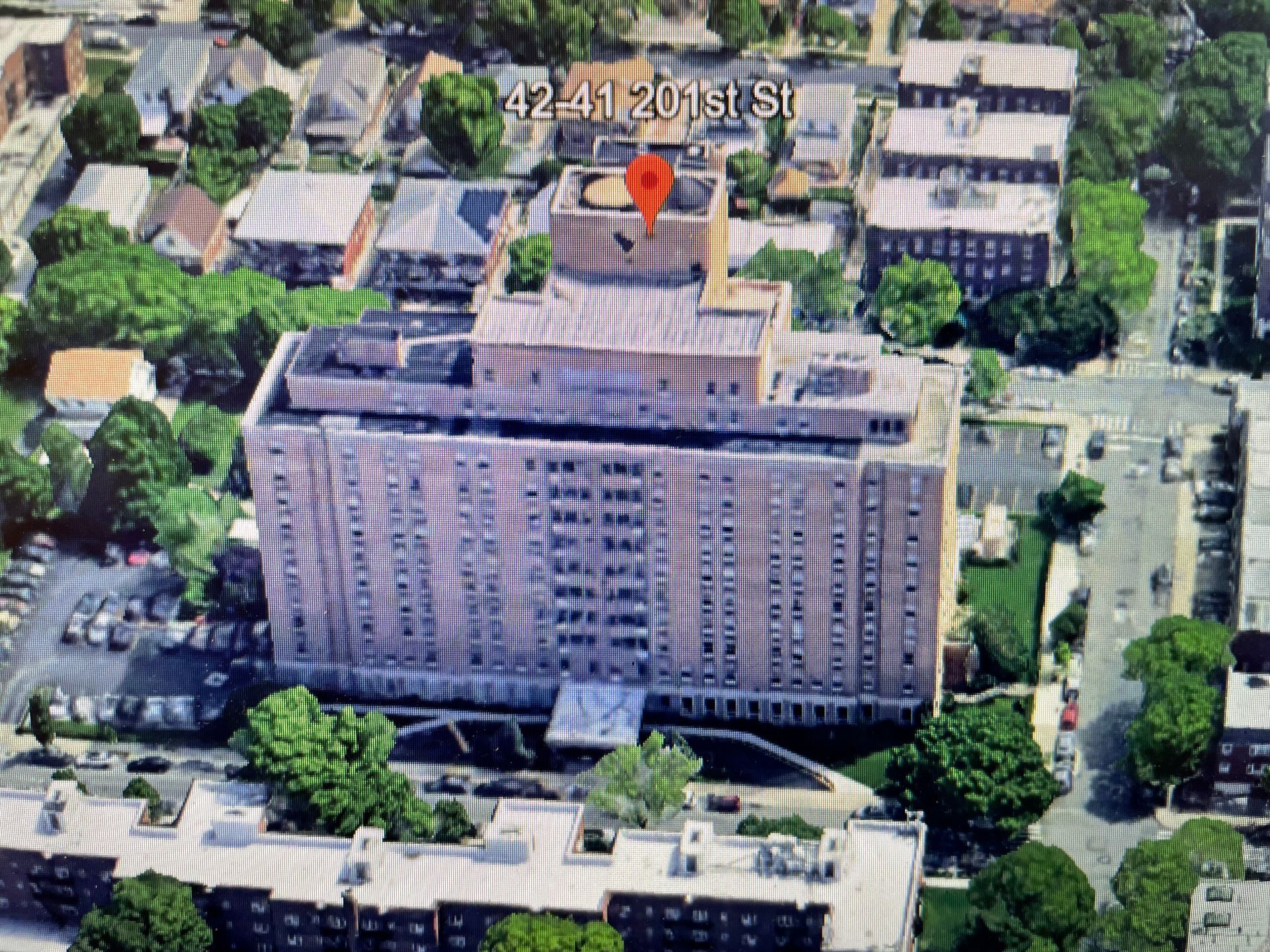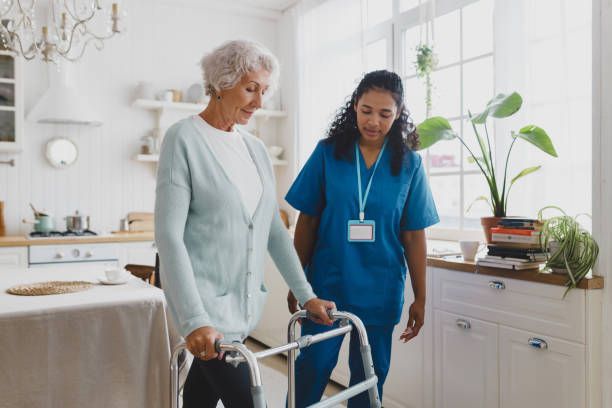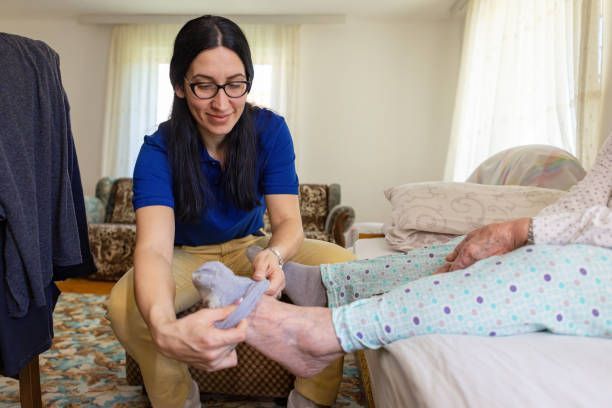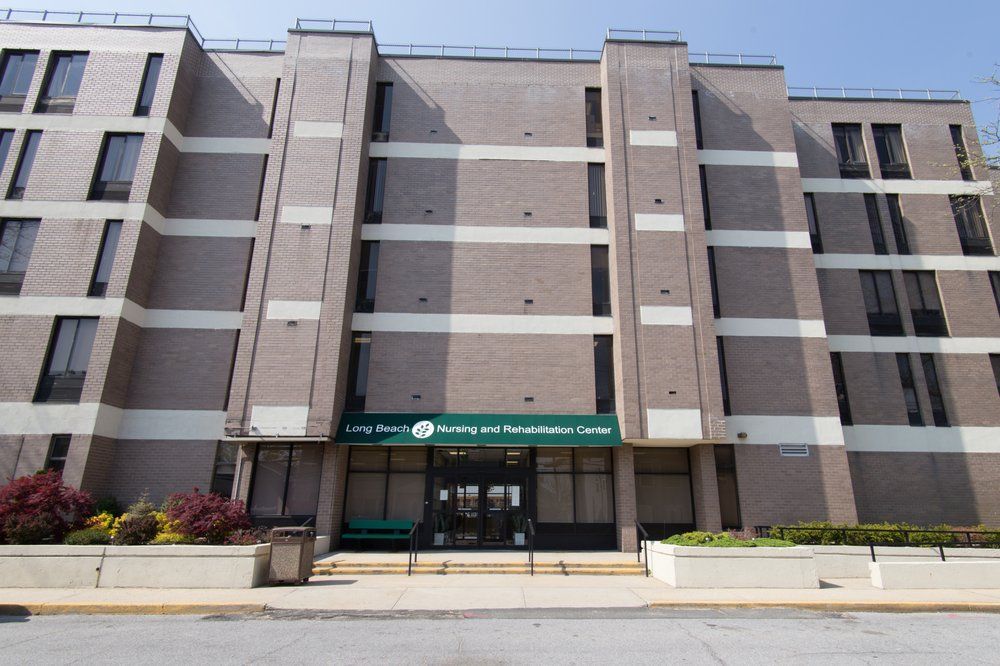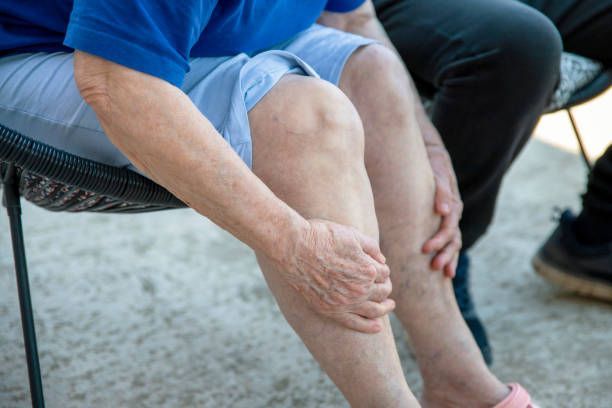11 Common Foot Problems in Seniors
11 Common Foot Problems in Seniors
Prevention is crucial when it comes to foot problems in seniors because early intervention can significantly reduce the risk of complications that can lead to severe pain, mobility issues, and a decline in overall quality of life. As seniors age, their feet become more susceptible to various conditions such as infections, ulcers, and deformities, which, if left untreated, can result in chronic discomfort, loss of independence, and even more serious health concerns like amputations, especially in those with diabetes. Regular foot care, proper footwear, and timely medical attention are essential in preventing these issues, helping seniors maintain their mobility, independence, and overall well-being. 7 Day Home Care is licensed by the New York State Department of Health to provide home care services in
Manhattan, Queens, Brooklyn, Nassau County, and Suffolk County, New York. To learn more about our home care services, please call 516-408-0034.
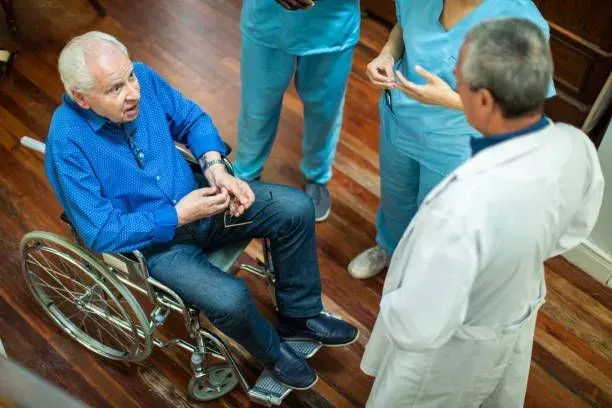
The Importance of Foot Health for Seniors
in Maintaining Independence and Well-Being
As we age, our bodies undergo numerous changes, and our feet are no exception. Seniors often face a variety of foot problems that can impact their mobility, comfort, and overall quality of life. At 7 Day Home Care, we understand the importance of foot health in maintaining independence and well-being for older adults. This comprehensive guide explores the most common foot problems that seniors encounter, their causes, symptoms, prevention, and treatment options. Whether you're a senior, a caregiver, or a concerned family member, this article will provide you with the knowledge needed to keep aging feet healthy and pain-free.
1. Arthritis
Understanding Arthritis: Arthritis is one of the most common foot problems among seniors. It is an inflammatory condition that affects the joints, leading to pain, swelling, stiffness, and reduced range of motion. There are several types of arthritis, but the most common forms affecting the feet are osteoarthritis and rheumatoid arthritis.
- Osteoarthritis: Often referred to as "wear-and-tear" arthritis, this condition occurs when the cartilage that cushions the ends of bones in the joints gradually deteriorates. It is most common in the big toe, but it can also affect other parts of the foot.
- Rheumatoid Arthritis: This autoimmune condition occurs when the body's immune system attacks its own tissues, including the joints. It typically affects multiple joints in the feet, leading to pain and deformities.
Symptoms:
- Pain and tenderness in the affected joints
- Stiffness, particularly in the morning or after periods of inactivity
- Swelling and warmth around the joints
- Reduced range of motion
- Development of bunions or hammertoes
Prevention and Treatment: While arthritis cannot be cured, its progression can be managed with a combination of medication, physical therapy, and lifestyle changes. Over-the-counter pain relievers, anti-inflammatory medications, and prescription drugs can help manage symptoms. Additionally, wearing supportive footwear, using orthotic inserts, and maintaining a healthy weight can alleviate pressure on the joints. In severe cases, surgical intervention may be necessary to relieve pain and restore function.
2. Bunions
Understanding Bunions: A bunion is a bony bump that forms on the joint at the base of the big toe. It occurs when the big toe pushes against the adjacent toe, forcing the joint to protrude outward. Over time, this misalignment can cause pain, swelling, and difficulty walking.
Symptoms:
- A visible bump on the side of the foot at the base of the big toe
- Redness and swelling around the affected joint
- Pain that worsens with walking or wearing tight shoes
- Restricted movement of the big toe
Prevention and Treatment: Bunions can be prevented or minimized by wearing properly fitting shoes with a wide toe box and avoiding high heels. If a bunion has already developed, treatment options include wearing protective pads, using orthotic devices, taking pain relievers, and applying ice to reduce inflammation. In cases where the bunion causes significant pain or deformity, surgery may be required to correct the alignment of the toe.
3. Corns and Calluses
Understanding Corns and Calluses: Corns and calluses are thickened areas of skin that develop in response to repeated friction or pressure. Corns are smaller and often form on the top or sides of the toes, while calluses are larger and typically develop on the soles of the feet.
Symptoms:
- Thick, hardened patches of skin
- Rough or waxy texture
- Pain or tenderness under the skin, especially when pressure is applied
Prevention and Treatment: To prevent corns and calluses, seniors should wear properly fitting shoes that do not rub or pinch their feet. Moisturizing the feet regularly can also help keep the skin soft and supple. Treatment options include over-the-counter pads to reduce pressure, pumice stones to gently remove dead skin, and prescription medications for more severe cases. In some instances, a podiatrist may need to trim or remove the hardened skin.
4. Plantar Fasciitis
Understanding Plantar Fasciitis: Plantar fasciitis is a common cause of heel pain, particularly in older adults. It occurs when the plantar fascia, a thick band of tissue that runs across the bottom of the foot and connects the heel bone to the toes, becomes inflamed.
Symptoms:
- Sharp, stabbing pain in the heel, especially with the first steps in the morning
- Pain that decreases after a few minutes of walking but may return after prolonged standing or sitting
- Heel tenderness and stiffness
Prevention and Treatment: To prevent plantar fasciitis, seniors should wear supportive shoes with good arch support and avoid walking barefoot on hard surfaces. Stretching exercises, physical therapy, and over-the-counter pain relievers can help manage symptoms. In more severe cases, corticosteroid injections, custom orthotics, or even surgery may be recommended.
5. Diabetic Foot Problems
Understanding Diabetic Foot Problems: Diabetes can cause a range of foot problems due to poor circulation and nerve damage (neuropathy). Diabetic neuropathy can lead to a loss of sensation in the feet, making it difficult to detect injuries or infections. Additionally, reduced blood flow can slow healing, increasing the risk of complications.
Common Diabetic Foot Problems:
- Ulcers: Open sores that can develop on the soles of the feet, often due to unnoticed injuries.
- Infections: Cuts, blisters, or sores that become infected due to poor circulation and immune response.
- Charcot Foot: A condition where the bones in the foot weaken and break, leading to deformity if untreated.
Prevention and Treatment: Seniors with diabetes should check their feet daily for cuts, blisters, or other abnormalities and seek prompt medical attention if any issues are found. Managing blood sugar levels, wearing diabetic shoes, and avoiding smoking can help prevent complications. In cases of ulcers or infections, treatment may include antibiotics, wound care, or surgical intervention to prevent the spread of infection.
6. Hammertoes
Understanding Hammertoes: Hammertoe is a deformity that causes one or more toes to bend downward at the middle joint, resembling a hammer. This condition often develops due to muscle imbalances, arthritis, or wearing ill-fitting shoes.
Symptoms:
- Toe deformity, with the affected toe(s) bent downward
- Corns or calluses on the top of the affected toe(s) due to friction against shoes
- Pain when wearing shoes or walking
- Difficulty moving the affected toe(s)
Prevention and Treatment: Preventing hammertoe involves wearing shoes with a wide toe box and avoiding high heels. If a hammertoe has already formed, treatment options include wearing orthotic devices, stretching exercises, and using pads to protect the affected toe(s). In more severe cases, surgery may be necessary to straighten the toe and relieve pain.
7. Ingrown Toenails
Understanding Ingrown Toenails: An ingrown toenail occurs when the edge of a toenail grows into the surrounding skin, causing pain, redness, and sometimes infection. It is most common in the big toe and can be caused by improper nail trimming, tight shoes, or injury.
Symptoms:
- Pain and tenderness along the side of the toenail
- Redness and swelling around the affected area
- Infection, with possible pus or drainage if left untreated
Prevention and Treatment: To prevent ingrown toenails, seniors should trim their toenails straight across and avoid cutting them too short. Wearing shoes that fit well and provide enough room for the toes can also help. Treatment for mild cases includes soaking the foot in warm water, gently lifting the nail, and applying antibiotic ointment. For more severe or recurrent cases, a podiatrist may need to perform a minor procedure to remove part of the nail.
8. Heel Spurs
Understanding Heel Spurs: Heel spurs are bony growths that develop on the underside of the heel bone, often in conjunction with plantar fasciitis. They are caused by strain on the foot muscles and ligaments, leading to calcium deposits that form a spur.
Symptoms:
- Sharp pain in the heel, especially in the morning or after standing for long periods
- Inflammation and swelling at the front of the heel
- A visible bony protrusion on X-rays
Prevention and Treatment: Preventing heel spurs involves wearing supportive shoes with cushioned heels, maintaining a healthy weight, and stretching the feet regularly. Treatment options include rest, ice, over-the-counter pain relievers, and physical therapy. In severe cases, corticosteroid injections or surgery may be necessary to remove the spur and alleviate pain.
9. Toenail Fungus
Understanding Toenail Fungus: Toenail fungus, or onychomycosis, is a common condition that causes the toenails to become thick, discolored, and brittle. It is often caused by a fungal infection that thrives in warm, moist environments, such as shoes and socks.
Symptoms:
- Thickened, brittle, or crumbly toenails
- Yellow, brown, or white discoloration of the nails
- Foul odor from the affected toenails
- Separation of the nail from the nail bed in severe cases
Prevention and Treatment: To prevent toenail fungus, seniors should keep their feet clean and dry, change socks regularly, and avoid walking barefoot in public areas like locker rooms or pools. Treatment options include topical antifungal creams, oral medications, and in some cases, laser therapy or nail removal. Preventing recurrence is key, as fungal infections can be persistent and challenging to eradicate.
10. Dry Skin and Cracked Heels
Understanding Dry Skin and Cracked Heels: As we age, our skin naturally becomes drier, which can lead to cracked heels and rough patches on the feet. This condition is not only uncomfortable but can also lead to infections if the cracks become deep.
Symptoms:
- Dry, rough skin on the soles of the feet
- Cracks or fissures, particularly on the heels
- Itching, redness, or bleeding in severe cases
Prevention and Treatment: To prevent dry skin and cracked heels, seniors should moisturize their feet daily with a thick, emollient cream and avoid hot showers, which can strip the skin of natural oils. Wearing supportive shoes and using heel cups or pads can also reduce pressure on the heels. In cases of deep cracks, over-the-counter creams containing urea or salicylic acid can help soften the skin, while a podiatrist can provide more specialized care if needed.
11. Circulation Problems
Understanding Circulation Problems: Poor circulation is a common issue for seniors, particularly those with underlying health conditions such as diabetes or peripheral artery disease (PAD). Reduced blood flow to the feet can lead to cold feet, numbness, and slow healing of cuts or sores.
Symptoms:
- Cold or numb feet
- Swelling, particularly in the ankles
- Discoloration of the skin
- Slow healing of wounds or ulcers
Prevention and Treatment: To improve circulation, seniors should stay active with regular, low-impact exercise such as walking or swimming. Elevating the feet when sitting, avoiding smoking, and managing underlying health conditions can also help. In more severe cases, medications or surgical procedures may be necessary to improve blood flow.
The information provided in this article by 7 Day Home Care is intended for general informational purposes only and should not be construed as medical advice, diagnosis, or treatment. While we strive to provide accurate and up-to-date content, the information presented may not be applicable to every individual or situation. We strongly recommend that you consult with a qualified healthcare professional or podiatrist before making any decisions regarding foot care or treatment for yourself or a loved one.
Foot problems are a common concern for seniors, but with proper care and attention, many of these issues can be prevented or managed effectively. At 7 Day Home Care, we believe in the importance of maintaining foot health as part of overall well-being. Regular foot checks, proper footwear, and timely medical intervention can make a significant difference in the quality of life for older adults. Whether you are a senior or a caregiver, understanding these common foot problems is the first step toward ensuring that your loved one's feet remain healthy, comfortable, and capable of supporting an active lifestyle. If you or a loved one are experiencing foot issues, don’t hesitate to consult with a healthcare professional or a podiatrist for personalized care and treatment. To learn more about our home care agency services near you, please call 516-408-0034.
Brian Callahan
7 Day Home Care



